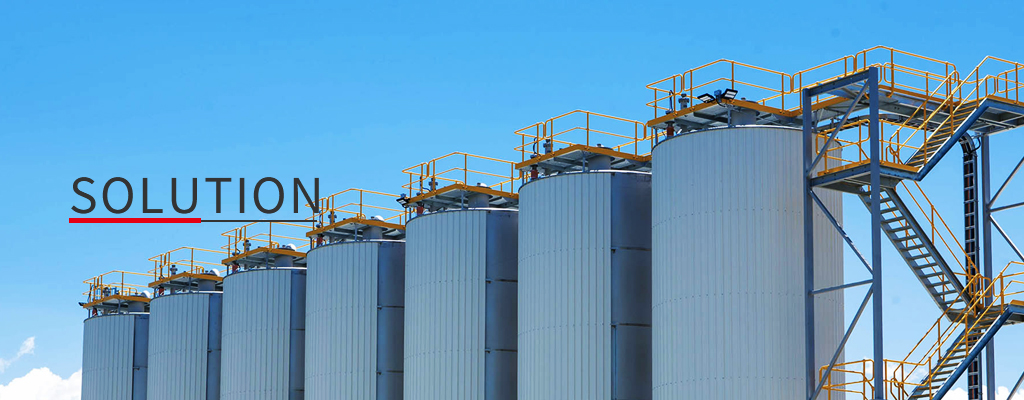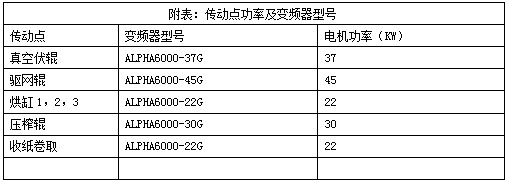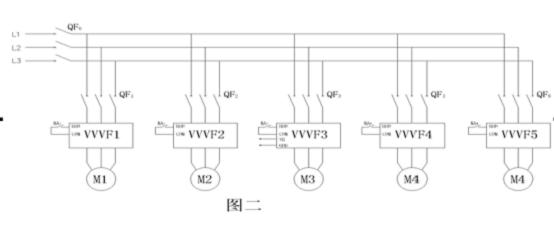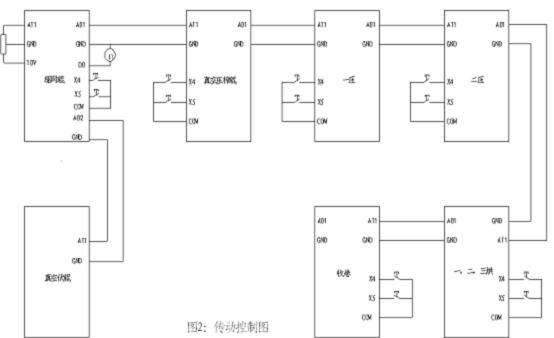

Paper-making enterprises are high-energy-consuming enterprises that consume more than 500 degrees of electricity per ton of paper, and the consumption of electric energy is very serious. The speed control of papermaking machinery has always been a weak link in the papermaking industry.
I. Overview
Paper-making enterprises are high-energy-consuming enterprises that consume more than 500 degrees of electricity per ton of paper, and the consumption of electric energy is very serious. The speed control of papermaking machinery has always been a weak link in the papermaking industry. The papermaking process requires the linear speed of each part to be absolutely synchronized at the respective synchronous frequency point, so as to ensure that the paper is smooth, the thickness is uniform, no wrinkle, and not broken. The speed, stability and adjustability directly affect the paper output and quality.
The traditional paper-making machinery adopts SCR DC speed control (high power) and slip motor (small power) transmission. Although the DC excitation speed control motor has the advantages of good speed control performance and large starting torque, there are many disadvantages: high cost ; Commutator, brush maintenance is difficult; difficult to use in harsh occasions; large noise is not suitable for operation. In order to reduce energy consumption, optimize product quality, improve labor productivity, modern papermaking equipment mostly uses multi-motor division transmission, that is, install an AC motor in each transmission division and prepare corresponding frequency converters, requiring each division to achieve synchronous control , Can also adjust the speed within a certain range.
2. Process requirements
In order to produce products with higher quality standards, the paper machine has the following process requirements for the transmission system:
a The working speed of the paper machine should have a large adjustment range: in order to make the paper machine have stronger products and raw materials
The adaptability (such as beating degree, slurry ratio and type, basis weight, paper type, etc.), the paper machine transmission can adjust the speed evenly in a large range.
b. The vehicle speed should have a higher stability margin: the total vehicle speed should increase and decrease smoothly. Paper machine speed is often due to power
The voltage, frequency and paper machine load and other factors fluctuate. In order to stabilize the basis weight and quality of the paper and reduce the web breakage, the paper machine is required to be stable.
c The speed ratio between each branch is adjustable and stable. When a load change or other disturbances lead to a speed change of a branch, it should be able to adjust in time so that the speed ratio of the branch does not change beyond the specified range.
d The single branch point has the functions of speed-up and speed-down, and paper-tightening function during the paper guiding operation. And at
These divisions should have single-action and linkage functions. And can start and stop at the same time. Necessary display, such as: line speed, current, running signal, fault signal, etc.
e Individual fine-tuning of each channel In order to inspect and clean the operating conditions of each branch, each branch should be fine-tuned individually.
At the same time, the speed of each branch in the synchronous speed can be adjusted to different values in order to achieve future synchronous control.
3. System configuration
1 Main circuit:
The paper machine is composed of a net drive roller, a vacuum roll, a vacuum press roller, a first pressure, a second pressure, dryer 1, dryer 2, dryer 3, take-up and take-up. There are 9 transmission points in total, and each transmission point is driven by 6000 frequency converters. Achieve stepless speed regulation.
2 6000 inverter features:
* Use high-speed 32-bit CPU dedicated for motor control
* Unique magnetic flux control algorithm
* Good low frequency characteristics, 0.5Hz can output 150% high starting torque
* Wide voltage input, fluctuation range 304-456V
* PID multiplexing function. Feedforward synchronous control
* Perfect over-current, overload and short-circuit protection
* Multiple frequency compound given function, etc.
3 The inverter is selected as follows:

4 Main circuit schematic diagram:
As shown in the figure below, the inverter adopts 6000 high-performance general-purpose inverter, the motor adopts asynchronous motor, one inverter drives one motor, and each switch is provided with an air switch to provide independent power supply, which is convenient for maintenance and debugging. The air switch is selected from the Schneider series. The switch has a perfect and reliable short circuit. Over-current protection measures, in conjunction with the inverter's short circuit, over-current protection can reliably achieve dual protection of the system.

5 Requirements of control loop:
a The main transmission parts can achieve uniform speed adjustment in a large range, and the speed of each transmission part needs to be synchronized.
b. The vehicle speed should have a higher stability margin: the total vehicle speed should increase and decrease smoothly. When a load change or other disturbances cause the speed of a branch to change, it should be able to adjust in time.
c Each part has the function of single action and linkage. Convenient for maintenance and debugging.
6 Synchronous control and fine adjustment of each branch
The drive network roller inverter gives the system speed through the potentiometer at the main speed, and other inverters implement cascade control with it respectively. It responds to the speed of the drive network roller, thus ensuring the system synchronization requirements. Another inverter can be independent from the cascade inverter Realize the fine-tuning of the speed, and after the fine-tuning of a certain frequency converter, the frequency converter behind it is automatically adjusted in response to ensure synchronization. The drive network roller and the vacuum roller frequency converter realize the load distribution control.

Four system advantages
1. The inverter is small in size and light in weight, without the need to add a control panel, it is easy to install, simple to debug, easy to operate, low noise and no vibration.
2. The speed regulation accuracy is high. When the load and network voltage change (340-420V), the motor speed does not change, so the adaptability is very strong.
3. It has complete protection functions and high integration, so the reliability is high. The frequency converter has self-diagnosis function, convenient maintenance, greatly reducing downtime and improving production efficiency.
4. Stepless speed regulation, small starting current, no impact on machinery and power grid, and good energy saving effect, can save about 30% of electricity.